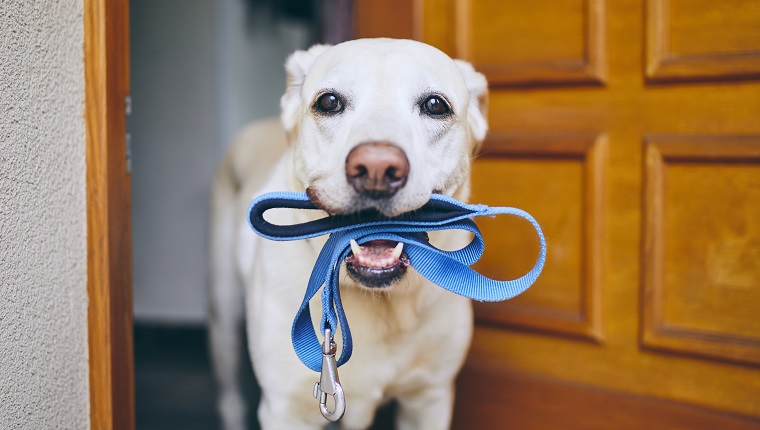Walking with your dog doesn’t just give them the exercise they need; it also helps you bond with your precious pooch! But as with any physical canine activities, you need to make sure you have the right equipment to keep your dog safe.
One of the most important accessories you can choose for your dog is a leash. With so many options out there, it might seem like an overwhelming prospect.
However, there are a few things that will help you narrow down which kind is best for your individual pet. Here’s some advice to help you figure out which kind of leash to get for your dog.
Factors You Should Consider When Choosing A Leash
The most important factors to consider when it comes to leashes for your dog are safety and comfort. You should talk to your vet for advice, and they’ll be a great resource to point you in the right direction.
Many people find that harnesses keep their dogs more comfortable by avoiding putting pressure on their necks. This is especially helpful for older or smaller dogs who have a predisposition to tracheal collapse.
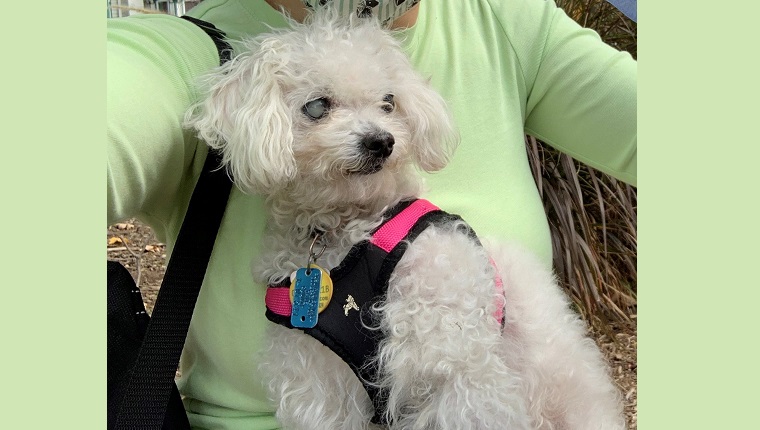
My little golden girl, Leia, fits those factors, so we use a harness with her, and she much prefers it for use with a leash! You’ll notice not all styles allow for a harness, so if that’s important to you, be sure to keep that in mind.
Other decision factors include what you’ll be using the leash for — walks, training, play, exploration, et cetera. Material, length, and tension are all important things to consider.
The Standard Leash

Ah, the standard dog leash — the OG, the most popular, and the least controversial. This style is the most widely recommended due to its durability and predictability.
Typically made out of nylon, though sometimes cotton or rubber, which are less durable and less predictable, this hardy leash is great for training and everyday use.
The most common length is six feet, though it can vary. Width also varies; for stronger, larger dogs, you may want a wider leash, so it’s easier to tug comfortably when needed.
Since this style is so popular, there are also other features you can choose, like reflective material and different clasp types.
Leather is also a popular choice in this style, but if your dog is a chewer, it’s not recommended because it likely wouldn’t last long. Also, leather is not recommended for walking in precipitation or wet areas.
If not exposed to these elements, and if conditioned properly, leather can be a very durable choice. Be sure to inspect your leather leash frequently, because if it’s exposed to moisture and not conditioned properly, it can become brittle and break, which is an obvious safety hazard.
Speaking of chewing, the chain design in this style is also a popular choice for mouthy dogs, especially puppies. The metal discourages them from chewing, so they won’t be able to destroy it.
While it does discourage chewing, it’s very important to make sure that your dog is not determinedly chewing a chain, as it can cause major dental damage. If their mouthiness knows no bounds, you may be best off getting a nylon or leather leash and just replacing as necessary to avoid the dental damage.
The Retractable Leash
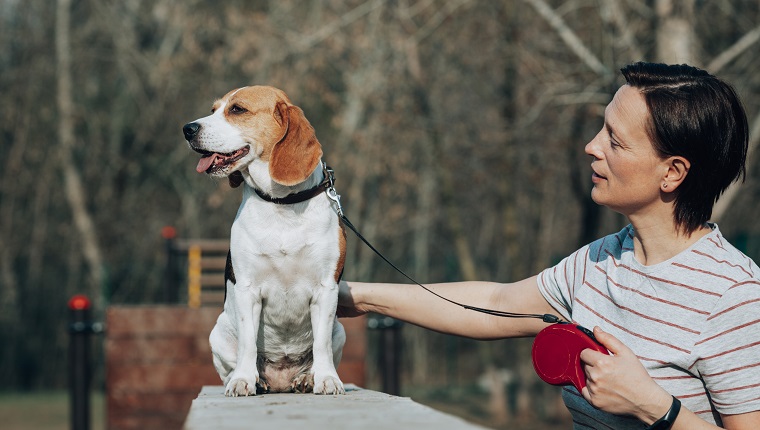
It’s hard to believe there could be an item whose popularity is as high as its controversy outside of pop culture or politics, but there is: the retractable leash.
Many people like it for the extra freedom it provides for their dogs, as well as comfort for both dog and human. However, improper usage can be dangerous, hence the controversy.
These are especially risky for big, powerful dogs, who may be harder to control if they start to run off. Bigger dogs may also have a harder time feeling the more subtle pressure of the retractable leash, especially if their focus is on something else.
The Drawbacks
Here are the dangers to be aware of with the retractable leash:
- The thin tension cord may get wrapped around your dog’s legs or neck. The thinness makes it harder to see, so this could happen without you knowing it if you turn around for a moment. Because there’s so much lead, your dog could start running with it wound around them, causing injury.
- Because of the longer lead, it’s easier for dogs to get themselves into trouble. They may be able to run out into traffic or run up to unfriendly dogs who may not appreciate the lack of space. Pay very close attention to your dog, especially in busy areas. If you approach a dangerous environment, press the “lock” button to limit how far your dog can stray.
- Bigger, more powerful dogs can cause these leashes to snap. If they exert enough power to break the leash, they may run off.
- Retractable leashes are not recommended for training your dog on walks because they can teach your dog to pull. Usually, the way to teach dogs to walk “politely” with a leash is to teach them to keep the lead loose. A retractable leash is always tight, and the only way to extend distance with it is to pull on it.
- If you hold the leash incorrectly, you risk getting rope burn. The good news is you only have to do this once before learning the painful lesson and never doing it again — yup, speaking from experience. While this can happen with any leash, it’s more likely with the retractable one due to its thinness and length.
The Long Leash

Boasting the best of both worlds, the long leash has the tension and firmness of the standard leash while also allowing the freedom of the retractable.
This style works well for a specific type of training: distance training or training for eventual off-leash work.
A long leash could also work well for hiking if your dog needs more freedom to roam but doesn’t work well with a retractable leash. As always, check that your environment is safe, as it may take you time to pull the leash back in if your dog is near danger.
Since this type of leash is not thin, it’s also more durable than the retractable. Leather may be a more comfortable choice for the human to avoid rope burn when having to pull the dog back in.
These leashes can be between 30 and 50 feet long. Because this length is not spooled up into a handle like the retractable, it is an unwieldy choice for daily walks and really just best for the two aforementioned training types or hiking.
The Slip Lead
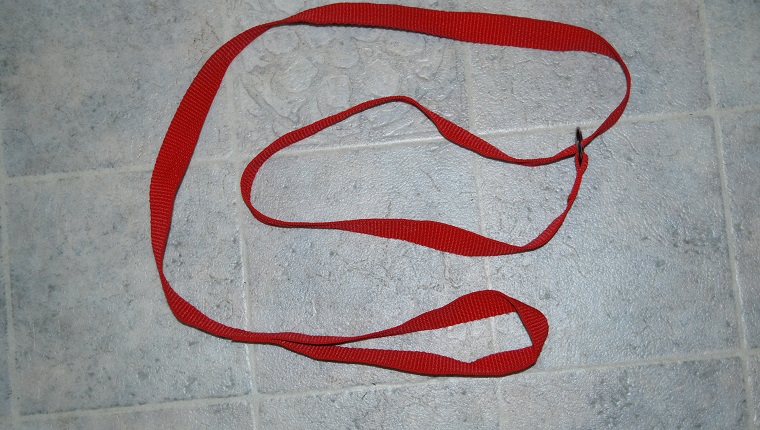
This style is an all-in-one collar and leash, meaning it cannot be used with a harness. It loops into itself through a hole, and the dog’s head goes through the loop, while the rest of the length serves as the leash.
Handlers really only use them for training or brief uses. They are not recommended for long-term use, as the tension created on the neck can be uncomfortable for dogs.
Vets often have these on-hand to use temporarily for visiting dogs, and they are great options for rescuers to keep on-hand in case of encountering stray dogs. They can even be used as emergency harnesses to lift an animal that is stuck.
The Martingale Lead
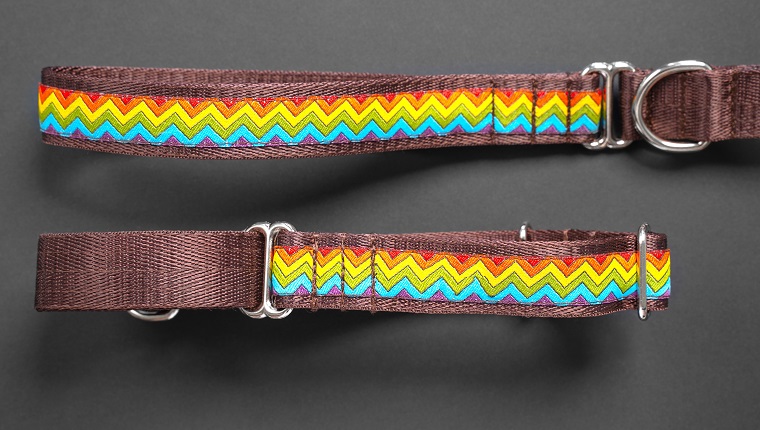
This is very similar to the slip lead, with added security to prevent a dog from being able to slip out of the leash as easily.
It was designed for dogs with smaller heads than necks, and as the dog would try to pull out of it, the lead would tighten.
Again, these might not be the best option for long walks or everyday use, but their ease makes them a quick option.
Adjustable Leash
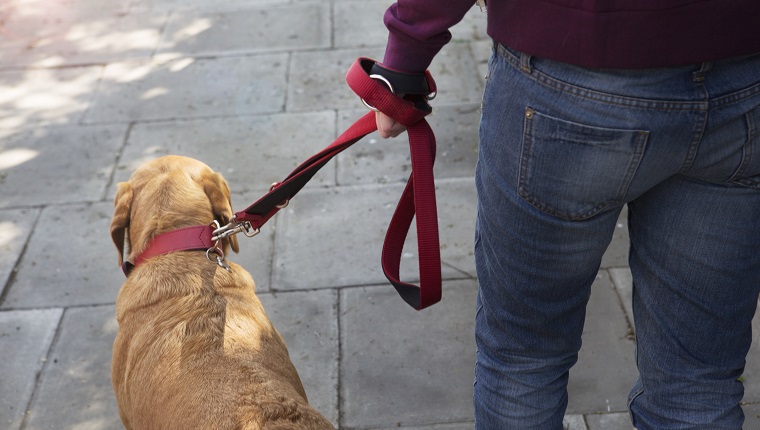
The adjustable leash is probably the most versatile of them all. You can adjust the length to different intervals and attach it to either a collar or harness.
Instead of a handle, there are clasps on both ends, meaning you can secure it around a tree, around yourself, or wherever you need to use it.
You can even use it to walk multiple dogs at the same time.
Double Leash
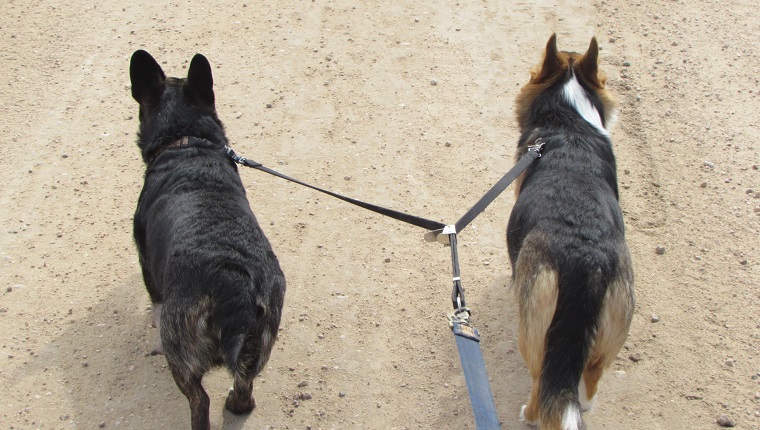
A double leash acts much like a standard leash, but, as the name implies, it secures two dogs at one time.
This can be helpful for walking multiple dogs at the same time, but it really works best if the dogs are similar sizes and have similar walking speeds, as the length from where the leash forks is pretty short.
Bicycle Leash

This leash is pretty one-dimensional; it’s only for attaching to a bicycle so the dog can run while the human cycles. It can be challenging to get the hang of, but once you do, it’s great for active humans with active dogs.
Of course, you shouldn’t use this type of lead if your dog has trouble walking or doesn’t like to run, and you must not go so fast that you’re out-pacing what your dog can handle.
If it works for you both, though, it’s a great way for you both to get a good cardio workout at the same time.
My Favorite Leash For Leia The Maltipoo
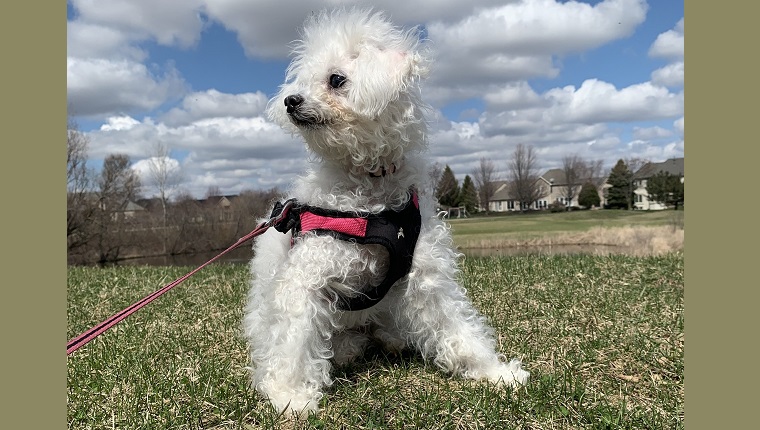
In the interest of full disclosure: the retractable is my favorite leash for our tiny Maltipoo, Leia. Because she’s so low to the ground, I personally find it challenging to use a traditional leash with her. I feel like we’re almost on top of each other during walks because the entire length only reaches down to the ground.
The retractable leash allows us more relaxed walks where we can naturally adjust the distance between us as necessary. Also, I really like how she gets just a little extra freedom to go check out an interesting smell.
Again, because she’s so low to the ground and so small, it would be hard for me to tell when she wants to pause to go smell something; she wouldn’t have much ability to indicate to me that she wants to take a break, since our steps would be so close together.
Also, I don’t personally have to worry about her charging off and breaking the leash. Her size makes this style very manageable for me.
It’s great we have so many options of leashes to use with our dogs, depending on our circumstances and needs. What type of leash do you use? Does your dog prefer one style over the others? Tell us in the comments below!
